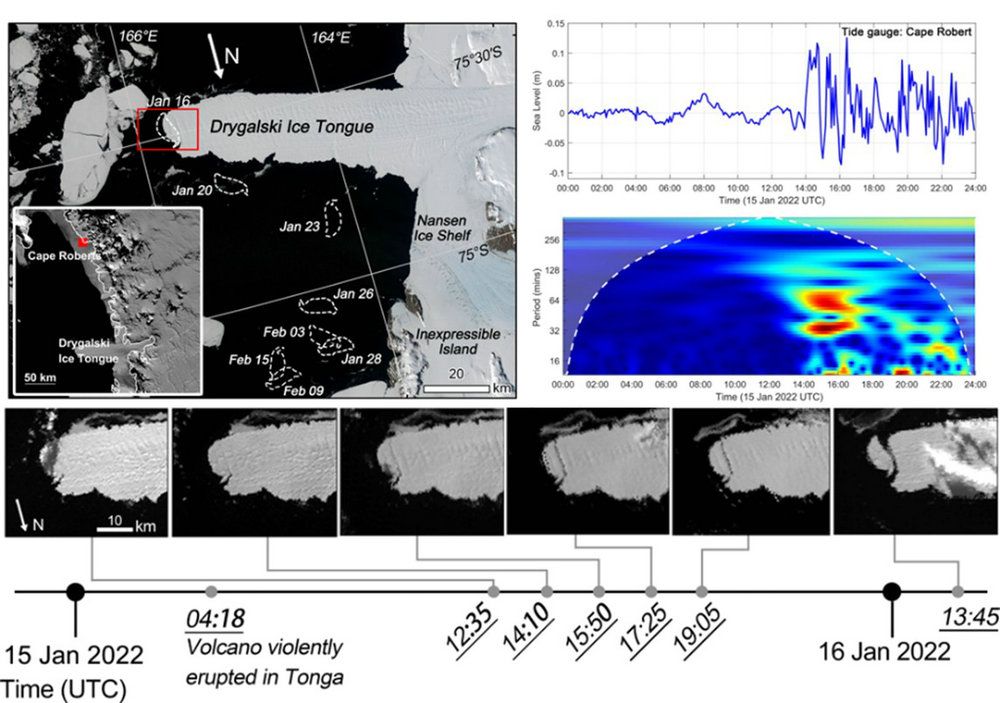Researchers from the School of Geospatial Engineering and Science in Sun Yat-sen University have disclosed that a tsunami triggered by last year's Hunga Tonga volcanic eruption caused the calving of the Drygalski ice tongue front in the South Pole, according to a recent research article published in the journal Science Bulletin.
The powerful explosion occurred on Jan. 15 of 2022 and then the volcano-triggered tsunami travelled over 6,000 km before hitting the coast of Victoria Land, Antarctica, said the article.
Less than two hours after the tsunami arrived, a crack appeared in the front of the ice tongue. A subsequent remote sensing image showed that an iceberg measuring about 45 square kilometers had apparently broken off from the front of the tongue.

Fig. 1. Drygalski Ice Tongue and the calving process
Previous studies of the impact of the eruption focused on atmospheric disturbances, while the researchers believed that its effects could be much wider than that.
The Drygalski ice tongue section has a length of 140 km, with a thickness between 300 and 700 meters, according to Qi Liang, the first author from the School of Geospatial Engineering and Science. It had two major calving events in the past 70 years.
The study provides the detailed observational evidence and confirms the linkages between the tsunami and the iceberg calving, said Cheng Xiao, dean of the School of Geospatial Engineering and Science, adding that the research implies the stability of ice shelves in Antarctica may be influenced by extreme events outside the polar regions.
Link to the paper: https://www.sciencedirect.com/science/article/pii/S2095927323001202?via%3Dihub
